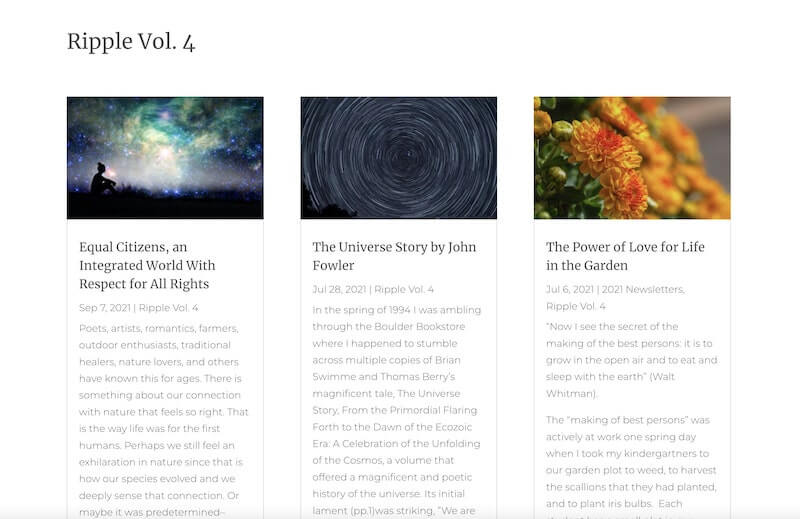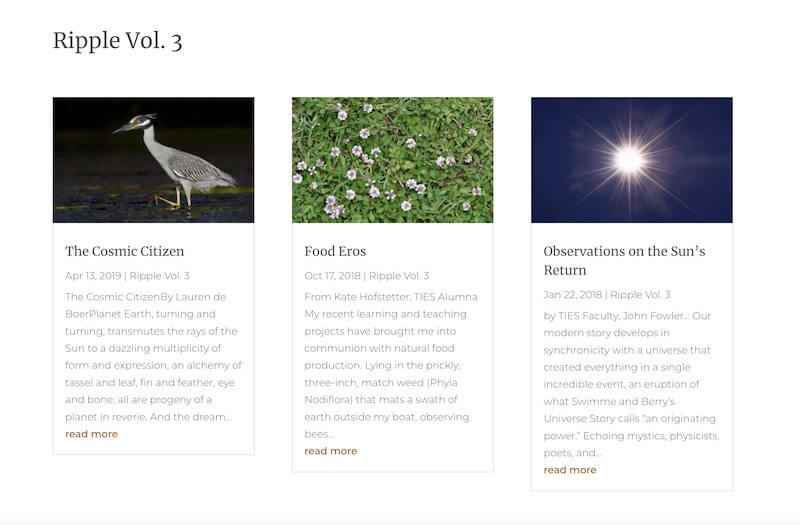It seems that the piece of somatic education that invites an exploration of the body moving in space and time is a crucial difference from meditation as well. Bauer (2018) continues, “Somatic education therefore teaches us to develop a mindful awareness of our body, both in stillness and in motion, increasing our kinesthetic awareness. As we develop this awareness further, our bodies themselves develop mindfulness, or an alive presence in the moment” (p. 27). It is as if with somatic practices, the act of “presencing” integrates the entire being – body, mind, and spirit. It certainly has been my experience that the ability for my whole body to develop mindfulness is a magical difference between mindful meditation and mindful somatic practice. With mindful somatic practice, a calm sense of presence coupled with a strong whole-body sensorial experience co-exists in the same space and time.
“Physical activities are helpful…at least they help us to move…But they don’t connect us with ourselves because they still have a motive external to the experience of ourselves. They still put us in the position of moving our bodies for a purpose, instead of becoming aware of ourselves.” (p. 19)
Movement is helpful for physical health, but movement for the sake of creating awareness is beneficial for physical, mental, and emotional health. This is not to say that mindful meditation practice is not helpful or valuable, but, instead, that mindful somatic practice integrates the entire being – body, mind, and spirit – into the process of knowing and understanding the inner world through both stillness and motion. For me, mindful somatic practices lend themselves to the experience of a more full and rich internal landscape, from which I can then begin to relate to my outer world.
That being said, mindful somatic practices can be daunting for learners, especially at the beginning. Of the process of adolescents learning mindful somatic practice, Bauer (2018) writes, “Teens may also often experience a corresponding sense of ‘dis-ease’ within themselves — a nagging feeling of being self-conscious or generally uncomfortable in their own skin” (p. 104). The “dis-ease” the learner may experience is an intentional part of the process. Students learn to move through the “dis-ease” and discomfort in a safe and supported environment. Through the process of moving through discomfort, students develop skills that allow them a frame of reference for future discomfort they encounter. To me, this is the process of developing resilience. Can you learn to tolerate discomfort and still be OKAY? Of this process, Bauer (2018) explains:
When teens begin to pay attention at a body level, they develop an increased self-understanding and self-care. With such heightened sensitivity, they gain the skills to manage their health and well-being — releasing built-up tensions, developing more significant embodied presence, and ultimately becoming freer and more at ease. (p. 104)
Mindful somatic practices can teach adolescents that they can be uncomfortable in their own skin, they can encounter chaos and uncertainty, self-doubt, and fear, and still be okay.
For adolescents who are dealing with growing and changing bodies riddled with self-consciousness and uncertainty, in a growing and evolving world riddled with uncertainty and chaos, I feel that guided mindful somatic practice has the capacity to allow these developing beings the space and time to begin to relate with themselves. And, from that place of understanding of self, adolescents can relate to one another and their world. Perhaps it is from that point of relating the inner self, with the outer world that adolescents may learn to “create with care” (Morgan, 2000, p. 127).
Bauer (2018) continues, “We might even call this ‘somatic intelligence,’ which combines both kinesthetic intelligence and intrapersonal intelligence, and can actually be seen as the psychophysical basis for all other types of learning” (p. 21). It is my impression that this “psychophysical basis” (Bauer, 2018, p. 21) is at the core of Integrated Learning. I would even argue that while seemingly a somatic approach is a “bottom-up” approach in comparison to a “top-down” approach, it is also possibly a “center-outwards” approach. To me, learning that integrates somatic experience into the process of education can spark a learner at their core, their center. And from there, the individual’s purpose can radiate outwards.
In my view, Integrated Learning involves the integration and interconnection between the various academic subjects studied, along with students’ connection to their innermost selves and their personal experiences with the subject matter. I can see the use of mindful somatic practices as a means for students to integrate their personal experience with academic subjects in a manner that allows for the development of personal meaning. This could perhaps lead to an even more authentic understanding of the academic subjects.



